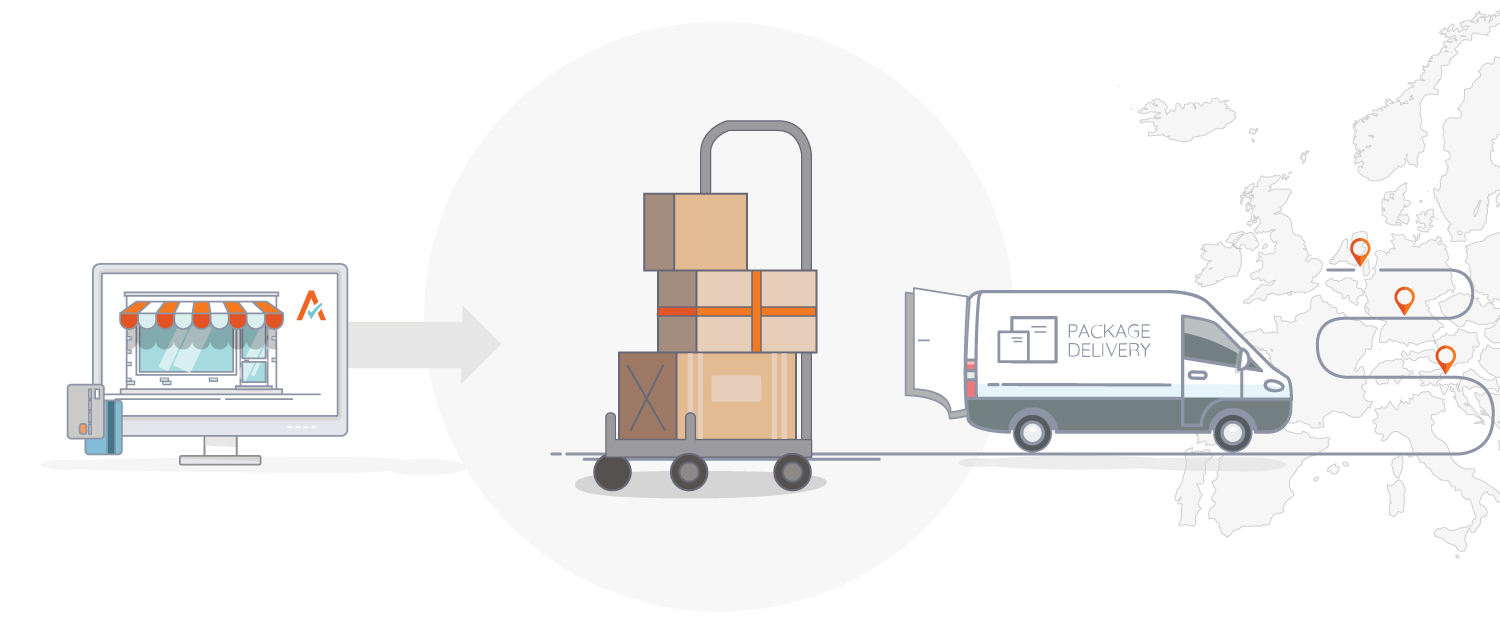IOSS and selling goods over €150, is it business as usual?
- Sep 7, 2021 | Avalara

Following the introduction of the Import One-Stop Shop (IOSS) on 1 July 2021, we’ve covered the introduction of new rules on consignments below €150, and how your business may benefit from the changes.
If, however, you're selling goods over €150 you might be asking yourself what the changes mean to you.
For goods over €150 you’ll be pleased to know, it’s business as usual!
While the customs process has not changed for ecommerce, sellers who ship consignments with a value of greater than €150 may now have the chance to simplify their VAT reporting. The options available to you will depend on how the business is structured.
If you’re wondering why consignments above €150 were not included in the EU reform changes, it’s because goods at this value also attract duty on top of VAT which would have been too complicated to administer.
If you are selling goods above €150 and plan to continue to store goods outside of the EU, then here are the options available to you.
Option 1: Your customer becomes the importer of record, meaning that they are liable to pay import VAT on delivery of goods
In this model:
the business ships the goods to the border via their carrier;
the customer then receives a notification to pay VAT and duties to obtain the product;
once the amount is paid the goods are cleared and sent to the customer.
Although this is the easiest model for sellers, this option regularly leaves customers with a negative experience due to the unexpected additional charges and additional delivery time. Similarly, for any returns, sellers are required to pay VAT in order to receive the goods. Claiming the VAT back is then in itself a time consuming task.
If you’re a start-up, or keen to expand your business with solid foundations with the ability to grow your selling capability, this option is probably not the best option for you.
Option 2: You pay VAT and duty at customs, then charge the customer the local rate of VAT
This model works as follows:
The business ships the goods to the border where the customer is located, usually via a carrier.
VAT and duty is paid by the business to clear the goods into the EU, which is followed by a local sale to the consumer at the local VAT rate.
This option provides the customer with a positive experience as the shipments get cleared through customs fairly quickly and they are not liable for any extra charges to receive their product.
While this is great for the consumer, it’s fairly costly for a business as they would be required to register locally in any country where they wish to follow this model. However if this option is adopted, businesses can easily recover any VAT on returned products which is an advantage over some of the other models.
The drawbacks with this option are around pricing. Consideration needs to be given to the potential VAT and duty rate you will be charged as customs. You therefore need to consider how these costs are then structured for the price the customer pays. For example, you may decide to apply an average rate across all the EU regions that you sell to, but remember, there is added complexity here around the varied VAT rates across the trading bloc. If a region with higher VAT rates outsells those with lower rates, it will prove costly to monitor.
A simple way to adopt this approach would be to implement a software solution to determine the VAT and duty rate based on the customer's location. This will help you accurately charge the right rate to the consumer, resulting in cost efficiencies for you.
Remember: Non EU-registered businesses may be required to appoint a representative for customs to import goods into the EU.
Option 3: As option 2, however instead of listing the business as the importer you still pay the VAT and the duty but your customer is listed as the importer
Often referred to as the ‘DDP Agent Model’, here:
- The business ships the goods to the border where the customer is located, usually via a carrier
VAT and duty is paid by the business to clear the goods into the EU. The difference here is that they list the customer as the importer of record.
This option provides the customer with a good experience as the shipments are cleared quickly through customs and there are no extra charges to receive their consignment.
A clear benefit of this option is that your business is not required to be registered in the locations you are shipping to although this varies for regions outside of the EU. Instead, you are required to obtain a Power of Attorney from the customer although this can make the checkout process slightly longer depending on how this is managed.
Again, this is great for the consumer but there is an indirect cost which may mean this is not the right model for your business. When goods are returned by the consumer the VAT cannot be reclaimed by the business who sent the goods because the declaration is completed with the consumer's details.
The higher your returns rate the less likely this model is for you. Footwear and apparel are not advised to use this model due to the naturally higher rate of returned goods.
Businesses also have the same issues with pricing under this model as they do in option 2 so the same applies regarding the implementation of software. The difference is that you do not have the extra invoice to reconcile which can lead to easier internal reporting.
Remember: Pricing can be difficult without an automated process so what you may spend on software you will potentially save in charging the right prices to the consumer.
Option 4: Ship goods to one EU location where they are held and cleared
This model uses certain elements of option two but with a slightly different shipping model to take advantage of the new ecommerce simplification.
In this model you would be required to choose a land country, that is, where you wish to clear the goods.
As with the second model the business becomes the importer of record and is required to pay all relevant VAT and duty charges. Then, you ship the goods from your clearance location to the EU country in which the customer is based.
From a seller’s perspective, this offers reduction in the amount of locations you need to be registered in. Within the chosen land country, you would then be required to register as normal and for a One-Stop Shop registration.
Again the customer would not receive any additional charges as these are borne by the seller. The only drawback is that the goods need to go via an initial location which may slightly slow down shipping arrangements.
Businesses also have the same issues with pricing under this model as they do in option 2 so the same applies regarding the implementation of software.
Remember: extra documentation may be required and additional cost added. It's more expensive than IOSS, but cheaper than registering your sales in each country you’re selling into. Refunds are possible with this option, which is a bonus.
Why is the number of returned products so important?
In short, it’s better to be registered in the country you’re dispatching to because otherwise, you’ll be liable for charges if a customer wants a refund.
If a business decides to choose option 3 they will not have the ability to request a VAT refund on the returned products. As a business you will want to provide the best customer experience so you will provide them with a refund even though this is a cost to you.
The below illustration demonstrates how option 2 or 4 could be more beneficial for the business.
| Sales: | £250,000 (Net) | |
| Returns rate: | 10% | |
| Goods returned: | £25,000 | |
| Average VAT rate: | 21% | |
| Average VAT rate: | 7% | |
| Business loss: | £7,000 |
Businesses may also have additional shipping and insurance costs but these are unlikely to be affected depending on the model.
If this information has been helpful, but you’re still unsure which model will work best for you, get in touch with an Avalara IOSS expert today.
Avalara's end-to-end IOSS solution
Sell to all 27 EU member states with just one VAT return. Get your business ready with our end-to-end IOSS solution.

